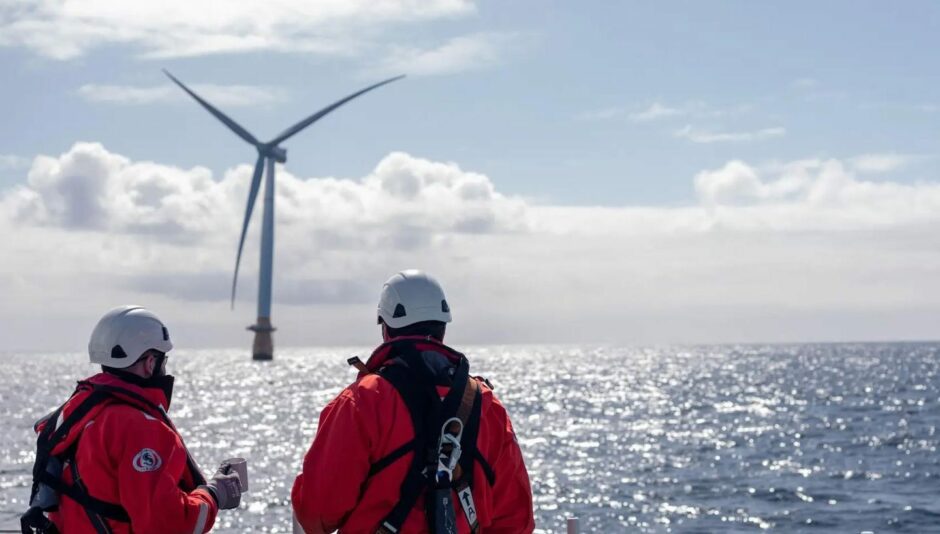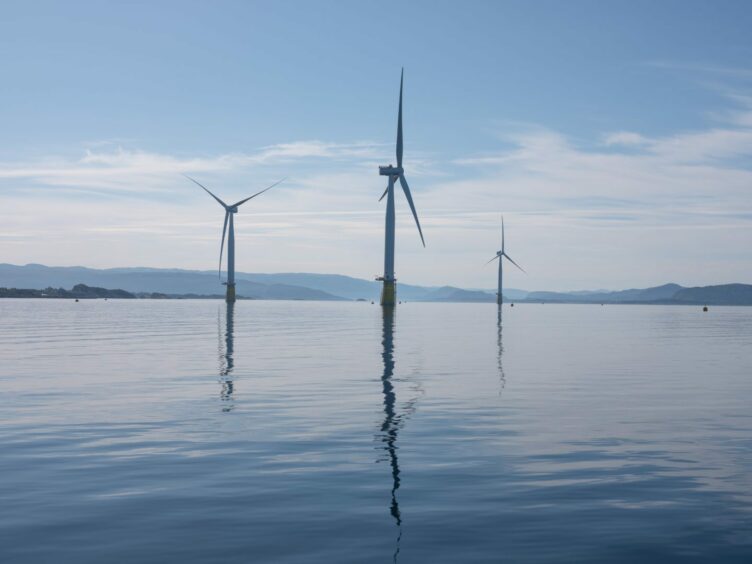
The world’s first floating offshore wind farm – Hywind Scotland – has passed five years in operation since its commissioning in 2017.
Located off the coast of Peterhead, the Equinor-backed project is the world’s first floating offshore wind farm.
Not only that, but the scheme retains the title of the world’s best-performing offshore wind asset having achieved a capacity factor – a measure of how often a wind plant operates at its full potential output – of 54% over its five years of operations.
With a capacity of 30MW across five turbines, Hywind Scotland uses the Norwegian energy major’s Hywind floating spar-substructure concept, and generates enough electricity to power the equivalent of 34,000 UK homes.
Equinor also celebrated high safety standards at the project, which has seen no loss time injuries during that five years.
To maintain the wind farm, Equinor (OSLO:EQNR) said it has used a “unique operations and maintenance (O&M) model” that involves upskilling onshore wind technicians to maintain turbines in an offshore, floating environment.
Plant manager for the site, William Munn said: “Operating the Hywind Scotland project for the past five years has informed Equinor of some of the unique challenges associated with a floating wind farm, and the rewards if we get it right.
“Because of its location and the harsh weather conditions it encounters, Hywind Scotland has exposure to higher wind speeds than we typically see on a fixed-bottom wind farm, but also has to withstand large waves, while continuing to produce power with wave heights of 10 metres. Due to the environment, unique operations and maintenance methods have been required, such as a high-performance crew transfer vessel (CTV) that can continue operations in higher-than-standard transfer conditions.”
Alongside operational improvements, the group has supported has the advancement of environmental initiatives via collaborations with Marine Scotland, to better understand how fishers can safely operate around and within floating offshore wind farms.
Further initiatives include the installation of an autonomous SailBuoy to map fish presence and biomass quantity with acoustic sensors, and testing a new method of analysing environmental DNA (eDNA) at the Peterhead site.
Hywind has also acted as a springboard for other floating Hywind projects in the North Sea and further afield.
Equinor’s next floating wind project, Hywind Tampen, delivered first power last month and when operational in 2023, the energy giant will operate roughly half of the world’s total capacity of floating wind.
Though the project had been eyed for completion this year, Equinor pressed pause on the installation of the final few turbines due to supply chain delays and a closing weather window.
The four remaining units will be stowed near the shore for the next few months, and are now scheduled to be fitted in the spring when conditions are more favourable.
Steinar Berge, Head of Floating Wind at Equinor, said: “Equinor is the world’s most experienced operator and developer of floating wind, and is taking lessons learned from Hywind Scotland further towards global opportunities.
“We are advancing plans to develop additional projects, including in South Korea, Australia, France, Spain, California, the UK’s Celtic Sea and Norway. Hywind Scotland provides Equinor with strong confidence in floating offshore wind technology and enables us to advance even-larger projects with a solid operational foundation, getting us closer to the ultimate aim of industrialising and commercialising floating wind.”
Recommended for you

 © Supplied by Equinor/Ole Jorgen Bratland
© Supplied by Equinor/Ole Jorgen Bratland